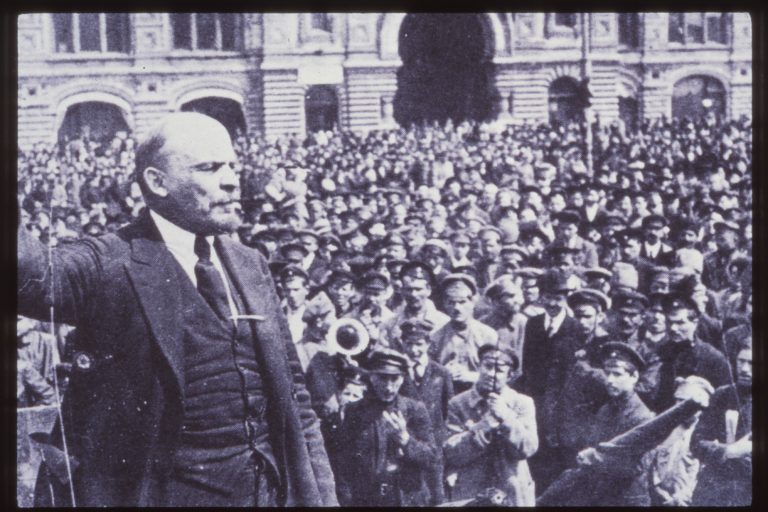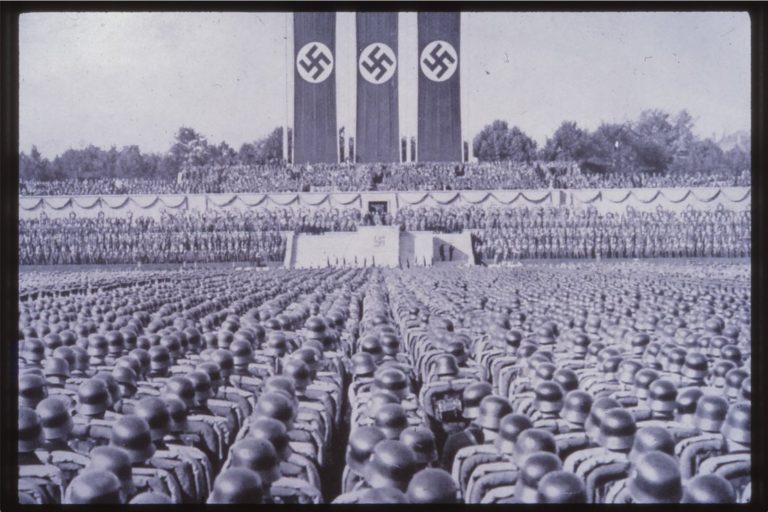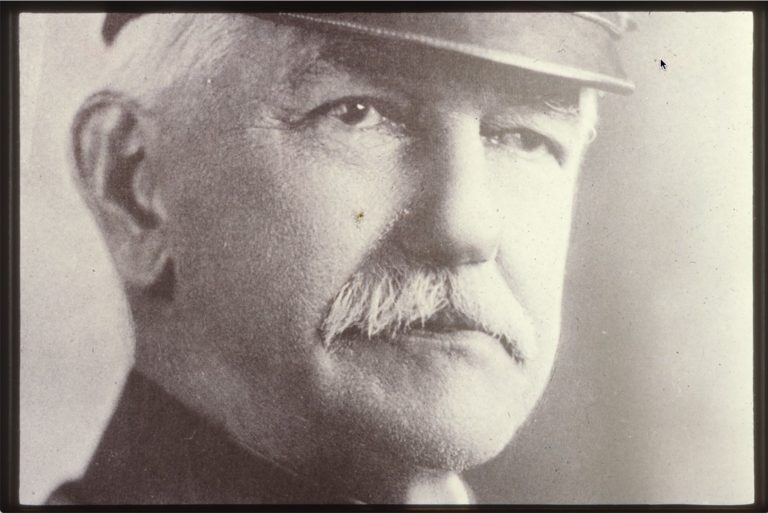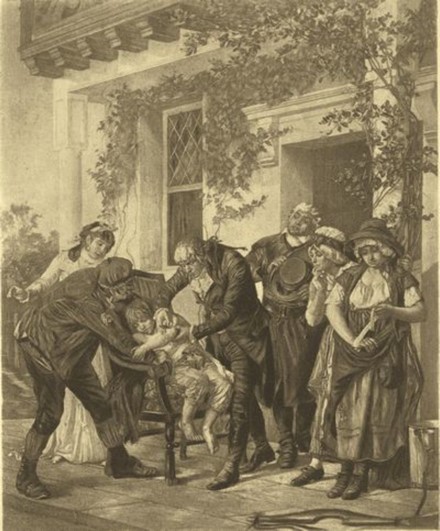Human Action Principles
Van Dyke Theater, Long Beach
Lecture Number Seven and Eight
Ladies and gentlemen, I cannot overemphasize the importance of Einstein’s advice on problem solving; “the formulation of a problem is often more essential than its solution.” This is not an overstatement. A penetrating formulation of a difficult problem is an integral part of the solution. Problem solving and solution building are one subject. Without problems, there are no solutions to build.
In our colleges they are missing another crucial subject. It could be problem solving and solution building 1A and then you have 1B and so on and so on. Remember, life is an endless series of one thing, problem solving exercises. What could be more valuable than to master a science of problem solving and solution building?
Nature has programmed us to seek greater satisfaction, but then nature has not given us so much as one clue on how to get it. To get satisfaction, we have to continually build solutions to problems. In general, people could solve more problems if they knew how to recognize the solutions when they see them. We are surrounded by solutions, but most people take them for granted or are insensitive to them in the first place.

For example, how many of the millions of people who have crossed over this bridge have ever said – you know, how really fortunate I am to be a beneficiary of this magnificent solution, the bridge. Have you done this? If the bridge is a solution, can all of you define the problem? How can we safely drive from point A over to point B over without falling into the unfriendly waters of San Francisco Bay? Now, safe to say that most drivers about to cross this bridge neither think of this problem nor do they celebrate the solution.
One of the things you need to learn how to do in life is to celebrate – that’s a whole subject, the science of celebration, celebration 1A. The bridge is a tangible solution built upon a foundation of many tangible solutions. The great solutions to the great problems in the physical, biological, and social domains are all derived from intangible abstractions.
The more important, valuable, and universal a concept, the more abstract it is, the more likely it will be overlooked or disregarded. For this reason, most people will overlook or disregard most of the great solutions to most of the great problems. But I have some good news for you, there is a lot of good news in this seminar. You are not most people.
The last session ended with the formulation of the grand problem of the 20th century, can we reach a scientific answer to the question, which is the true means of the attainment of the greatest satisfaction for the greatest number, interventionism or non-interventionism? It was said that during the remaining sessions of this seminar I will apply science and optimization theory to resolve this question. It was not apparent, however, that in formulating the problem I presented you with a major solution.
It is this; human society has not evolved into a dozen different social systems. There are not even half a dozen different social systems. There are only two separate and distinct social systems. I will give each of these contrasting social systems a label. The first is the free society, which I also call the win-win society. This could be named the social system of non-interventionism or it could be named a free society – these are just different ways of saying the same thing.
Once you understand the structural organization of the free society, you will recognize that the alternative to this social system is what? Everything else, that’s it. And the everything else also has a label, it is called the unfree society or the win-lose society, the interventionist society, all different ways of saying the same thing. It is the social system of interventionism.
The classification of and division of social systems into two separate and distinct social systems is a solution to your greater understanding of social causality. It’s important to note that our science and optimization theory does not begin with a premise that non-interventionism is good and interventionism is bad. However, both the advocates of interventionism and non-interventionism claim their respective social systems will attain the greatest good for the greatest number.
In this seminar we will apply the methods of science to evaluate which of these two contrasting means will attain the ends sought. Now let’s start by answering this question: How can we explain in a few words the difference in principle between these contrasting social systems. The system of non-interventionism, first of all, maximizes individual human choice, that’s the first thing to look at.
Where there is a free society and non-interventionism all of the people who live there have the complete freedom to buy and sell. The consumer bosses have the freedom to buy and the producers of products have the freedom to sell. In a free society, where each individual has the freedom to buy and sell, each individual can be said to possess freedom. Whether or not freedom is desirable, something worth having for some humans or all humans, is another question.
Throughout recorded history from time to time and from place to place, some men have sought freedom. For the most part their quest for freedom has been emotionally inspired rather than intellectually inspired. If you confiscate a man’s freedom, most men will not like this, his response will be emotional – hey, you can’t do that! Man’s emotional response to the loss of his freedom, an effect he dislikes, does not tell him the cause of or the source of the effect he is more apt to like, namely freedom.
If we set aside emotion and approach freedom as a science, we can use observations to witness this human action phenomenon, and that is the maximization of human choice for all individuals causes the social effect of freedom. The existence of freedom implies potential existence of its opposite known as slavery. The minimization of human choice for all individuals causes the social effect of slavery.
Now I have shown you the connection between freedom, the free society and non-interventionism. Is there a connection between slavery, the unfree society, and interventionism? A system of bureaucratic interventionism minimizes individual human choice. Now you can employ observation to witness this human action phenomenon. If you can observe it, if you can witness it, then you don’t have to accept the generalization upon faith. That’s why we use observation in science.
Since the development of modern science over the past three centuries there have been many attempts to combine science with faith. I will not attempt to do this here. In any case, the difficulty that has to be overcome is this, namely science is built upon observables and faith is built upon unobservables. Faith always requires acceptance of premises and conclusions without observation and verification.
In contrast, science always requires acceptance of premises and conclusions based upon observation and verification. In a few words, there’s the difference between science and faith. I have said that the dominant social issue of the 20th century is interventionism versus non-interventionism.
The issue can be restated by asking these questions. What do you think? Should we have more freedom or should we have less freedom or do we have just about the right amount of freedom? What do you think? Versus, should we have more slavery or should we have less slavery or do we have just about the right amount of slavery?
There’s another important dichotomy between these two systems. Within a free society, the system of non-interventionism establishes unimpeded entrepreneurial management and orchestration of the means of production. In sharp contrast, within an unfree society, the system of interventionism establishes bureaucratic management and orchestration of the means of production.
Now once it becomes clear there are only two social systems to choose from, then we can apply scientific methods to answer this question; will bureaucratic control or entrepreneurial control of the means of production attain the greatest good for the greatest number, which everybody claims they’re after.
These two systems of economic and social organization are in sharp contrast and it is commonly believed that these two systems can be mixed to form some economic or social hybrid believed to be an improvement over bureaucratic control alone or entrepreneurial control alone. That is a common view.
But with regard to any given factor of production, whether it’s land, labor, or resources, the control over these factors must be either entrepreneurial control or bureaucratic control – that’s it. If a factory is producing ball bearings or tennis balls, it will either be managed by an entrepreneur or a bureaucrat. Either an entrepreneur will make the last and final decision on any transaction or a bureaucrat will make the last and final decision. There is no third choice. Either the entrepreneur will determine the worker’s compensation or a bureaucrat will determine their compensation. There is no other choice, there is no third choice – that’s it. One or the other of these two must have the last word. When the bureaucrat has the last word, it always involves some form of imposed interventionism.
Let’s take a look at the two main approaches in the 20th century to the establishment of entire social structures based upon interventionism. Remember that when you are the target of interventionism, your freedom to choose has been confiscated, your liberty has been seized. One of the two prominent versions of this we can call interventionism Russian-style.
I’ve given it this title not to bash Russians, I don’t have anything against Russians, but because it was first perfected in Russia by Russians. The Russian whose name is most closely associated with the founding of interventionism Russian-style is the communist leader, most of you will recognize his picture. This is Nikolai Lenin.

Now the number of books that have been written on the subject of Russian communism, or what I am calling interventionism Russian-style, numbers in the tens of thousands, perhaps hundreds of thousands, who knows. Dear friend, if you are ever tempted to read any of these books, I will save you a lot of time.
Because, if you sweep aside all of the political rhetoric that obscures the reality of interventionism Russian-style, you have a simplex social system. Simplex means what? One action. You have a simplex social system based upon one dominant theme. Marx and Engels, writing in their well-known Manifesto of the Communist Party, tell us in their own words, the theory of the communist may be summed up in a single sentence: the abolition of private property.
Now following this doctrine, the Russian communist says I am confiscating your property and if you oppose me in this confiscation, you will be shot. Any questions? Good. Under the social system of interventionism Russian-style, all of the factories, plants, stores, shops, and farms, were nationalized. The term nationalized, as you know, is a proper sounding bit of political jargon, which means that all of the property was confiscated from its owners at gunpoint. Hence, that’s what nationalized always means, property is confiscated at gunpoint.
Now what is the justification offered by these political communists for the confiscation of all this property? It is said in the end this confiscation will accomplish the greatest good for the greatest number. Under this social system of interventionism Russian-style, there is no compassion shown on the part of these communist confiscators toward anyone who is even suspected of being an owner of property.
During the early days of the Russian revolution the communist authorities would implement interventionism Russian-style. They would do this by rounding up people in the streets at random and, one by one, people were forced at gunpoint to thrust the palms of their hands out to the waiting gunman. If your hands were the calloused, rough hands of a worker, a proletarian, a peasant, they would let you go. Everything was fine – you can go now.
But if your hands were white and smooth, like mine and perhaps yours, you must be a member of the hated bourgeois class of property owners. That’s proof – look at your hands. Without benefit of trial, as they stood with their outstretched hands, these suspected property owners were all shot. Some got shot in the head, some got shot in the heart or lungs. That was about the only variation.
What was the justification for all of this? In the end this confiscation of human life will attain the greatest good for the greatest number. In Lenin’s own words, he will justify the murder of millions and millions of his fellow Russians by using the same justification that Maximilien Robespierre used for the murder of his fellow Frenchmen. Robespierre and Lenin both said – well, you can’t make an omelet without breaking eggs. What do you expect, any questions? Good.
Let’s take a look at the second main approach in the 20th century to the establishment of entire structures based upon interventionism. I call the second approach interventionism German-style. It is given this name not to bash Germans, in fact one gentlemen who was a native German, a physicist who took my course one time when I said this, he insisted, he was indignant, you are bashing Germans and I’m a German.
Well, I’m not bashing Germans. It is given this name because it was perfected in Germany, by Germans, so it’s called interventionism German-style. They developed this style of interventionism. The most prominent German associated with interventionism German-style was a military leader and president of the German Republic known as the Weimar Republic, 1925 to 1934. If you know anything about German history or European history, you have heard of Paul Von Hindenburg.
Now if we cut away all of the political language that clouds a precise understanding of interventionism German-style, we are left with a simplex doctrine. A German politician or his bureaucratic agent says I am controlling your property. If you oppose me in this control, you will be shot. Any questions? Good.
And so, where the entire social structure is based upon the enforcement of interventionism German-style, the justification for every act of bureaucratic interventionism is always the same. In the end this interventionism will accomplish the greatest good for the greatest number.
Now the main difference between interventionism German-style and Russian-style is that in the German version they don’t shoot the entrepreneurs. They give the appearance of preserving the entrepreneur’s control over the means of production. The language of the free market, for example, prices, wages, interest rates, private ownership of property, these remain in everyday use.
But a major change has taken place, interventionism German-style eliminates entrepreneurship and the entrepreneurs. They exist in name only. What happened to them? They did not physically take leave of their factories and businesses and they were not jailed or shot as in the Russian style of interventionism. Interventionism German-style converts all of the entrepreneurs into managers.
The difference between an entrepreneur and a manager is both profound and extreme. That would be a good essay assignment for anybody who has an MBA – write me an essay on the difference between the two. I say that knowing that a number of people in this room have MBAs. An entrepreneur assumes the risk to make the major decisions that determine the success or failure of the business.
In sharp contrast, a manager merely manages the execution of those decisions and in so doing assumes little or no risk. In common language, the entrepreneur gives the orders and his managers execute and implement those orders. On the surface a former entrepreneur, now a manager, appears to conduct business as usual. This is under interventionism German-style. He buys and sells, hires and fires, pays salaries and wages, borrows funds to pay for factories and tools, pays interest and so forth.
But now in his new role of manager he no longer gives the orders, what does he do? If you are not giving orders you’re what? He is following orders, he is forced to obey all of the orders issued by the government’s bureau of production. His bureaucratic agency issues commands telling the former entrepreneur, now manager, what to produce, how to produce, whom to sell to, and at what price to sell. These bureaucrats then dictate where every employee will work. They give commands that set all wage rates, interest rates, and the prices of goods and services. And so, wherever the government runs the economy, a major change has taken place.
Factory and shop managers are no longer allowed to meet the market demands of the consumer bosses for goods and services. They are now required to follow the dictatorial commands of the bureaucratic bosses. And so interventionism German-style, retains the labels of a free market economy while at the same time it imposes a major social transformation.
Where any bureaucracy dictates to an entrepreneur how to conduct his business, the entrepreneur has been transformed into a bureaucrat. A bureaucrat is anyone whose function is to execute or carry out government orders, decrees, dictates, and commands and that is exactly what the now shop manager is doing. The transformation of the entrepreneur into a bureaucrat is a dramatic change.
What does this change mean? What is the fundamental difference between a bureaucrat and an entrepreneur? What must every entrepreneur do to survive? The entrepreneur must continually meet the changing choices of the people for those products that will give them greater satisfaction.
In sharp contrast, what must every bureaucrat do to survive? Please note the difference. The bureaucrat must continually confiscate the choices of the people in their pursuit of greater satisfaction. To illustrate, an entrepreneur obtains financing from willing investors, but a bureaucrat obtains financing from whom – unwilling taxpayers. Is this observable? Do you have to take this on faith? You can independently observe it, yes?
Pure reason tells us these taxpayers are unwilling payers because if they were willing to pay for this array of bureaucratic projects, they would not have had to have been taxed. Pure reason tells us this, doesn’t it? Observation tells us you only have to force an individual to give you something when he is unwilling to give it to you.
If our goal is to understand causality, we must not hide the fact that government confiscation always involves acts of violence or the threat of that violence. And so violence defined is the initiation of physical force or the threat of its use against an individual for the purpose of confiscating his freedom of choice. That is not an unimportant definition.
If you want to know what I mean by violence, I mean this: Violence is the initiation of physical force or the threat of its use against an individual for the purpose of confiscating his freedom of choice. And yet few educated people have been sensitive to the violent nature of all government interventionism. This violence has been largely hidden from view. It has been so well hidden that even those people who are the strongest advocates of non-violence are most often the strongest advocates of government interventionism and they don’t see the internal contradiction.
We will use scientific observation to reveal that all government interventionism is imposed with violent action or the threat of such action.
Now one thing to note here, whenever I give you a sweeping generalization like this, it does not allow for exceptions. If you think you know of an exception to this – but Mr. Snelson, what about blah, blah, blah? When I give a generalization like this, I’m not allowing for exceptions. I am saying there are none.
At this juncture this science does not determine whether this violence is good or bad. I have not said violence administered through the hands of the government is good or bad; I am simply defining it. Good and bad is a value judgment. The main aim here is to determine whether government violence can attain the greatest good for the greatest number, which is always the claim.
When the government confiscates the people’s wealth through taxation, the method of confiscation is violent. Taxes are paid because most taxpayers are afraid to resist the tax collectors. The people fear the violent methods imposed by government agents to enforce every government decree. The government imposes violence against the people by employing heavily armed policemen, soldiers, prison guards, and executioners. These men become the enforcement branch of bureaucratic interventionism.
Those people who disobey or resist the decrees of the politicians and bureaucrats will be fined, imprisoned, punished, beaten, or killed. Throughout the history of government, this has been the fate of the disobedient.
Those who demand more government interventionism are unavoidably demanding more government compulsion and violence.
But we are not here to condemn these advocates of violence. Most of the violence in history has been caused by men with lofty aims, but they did not understand how to accomplish those aims. Interventionism – and I’ll have more to say about this as we continue – interventionism German-style, has been successfully exported outside of Germany. That was not, for the rest of the world, a good thing to have exported. It has been imposed upon the French people by their politicians. Interventionism German-style, has been imposed upon the British people by their politicians, and it’s been imposed upon the American people by their politicians.
In America, most American politicians advocate interventionism German-style, in one form or another. Now, you’ll hear them claim they do not want to abolish private ownership of the means of production or entrepreneurial management or the free market exchange, but that is the main theme of interventionism German-style.
The main theme of interventionism German-style, which is the main theme of most American politicians, we will not confiscate your property, we only intend to control it. That’s the main theme of interventionism German-style. Listen to a major spokesman for interventionism German-style, one Adolph Hitler, writing in Der Fuhrer.
He said, in 1926, this is Adolph Hitler, “We stand for the maintenance of private property. We shall protect free enterprise as the most expedient, or rather the sole possible economic order.” Adolph Hitler.
That is a main theme of interventionism German-style. But in Germany, under Hitler’s rulership, private property and private enterprise existed in name only. All property was under the control of the Third Reich and its army of bureaucratic interventionists.
In Hitler’s Germany, there were no consumer bosses – only bureaucratic bosses.

All of these, with the helmets, they’re there to enforce the bureaucratic decrees. Germany then became a nation of bureaucrats. In America, a popular theme among many politicians has been we must not interfere with the free market, except when the free market doesn’t work.
This always means, freely translated, interventionism German-style. We must replace consumer bosses with bureaucratic bosses. It always means that – whenever you hear that, that’s what it means. As the bureaucracy expands its control over the free market, there are fewer and fewer choices available to buyers and sellers.
Soon, a profound change takes place – the consumer bosses are no longer boss. They can no longer determine what should be produced in what quantity, with what quality, by whom, where, and how. All of the consumer’s choices have been confiscated by the government bureaucracy. The bureaucracy has seized the consumer’s freedom to choose.
What are the consequences of this interventionism? Government interventionism confiscates the supremacy of the consumer, replacing it with the supremacy of the bureaucrat. Fill in the blank. Now, how many of you think this is a large change? Anyone? All right, maybe half of you. How many think it’s a small change? How many aren’t sure? Okay. And of course, how many don’t care?
This is the substitution of a bureaucrat ruling your actions in place of you ruling your actions. That’s a big change. Where the people are ruled, their freedom has been confiscated, and where is freedom? Freedom exists where the individual’s discretion to choose is not confiscated by interventionism. If you didn’t get that definition before, here it is again.
But some might argue, but wait a minute, Mr. Snelson, isn’t that a trade-off? You lose something, but you also gain something. In this case you lose a little freedom, but you gain a little more prosperity. Have you heard this? For example, when the government funds a public works project, it is said that the project will create new job opportunities, which will mean greater prosperity for the people. How many of you have heard this? All of you have heard this from the time you left the womb.
But what is the truth? Well, here is the truth. A bureaucracy can never generate a higher level of prosperity; it can only convert what would have been without the interventionism, a higher level of prosperity to a lower level of prosperity with the interventionism. For example, government-funded building projects are deceptive with regard to the image they project.
Here is a generalization you can make concerning any such project. It’s this: Government construction projects create the illusion that such violently-imposed projects create greater prosperity for the people. This fallacy was refuted over a century and a half ago by a French economist, Frederic Bastiat in a pamphlet entitled; That Which Is Seen and That Which is Not Seen.
Bastiat clearly exposed this illusion. He points out that when some new government project is under construction, everyone sees carpenters, stonemasons, and various craftsmen busy at work on the project. And since all of this is easily seen, just look as you drive by in your carriage at that time, the assumption is, the government has created all of these job opportunities that otherwise wouldn’t exist.
Do you know who makes this assumption? Almost everybody makes this assumption. Literate and illiterate. Educated and uneducated. They all make the same assumption – well isn’t that great. That is seen by every passerby, isn’t it? But then Bastiat asked, wait a minute, what is not seen? For example, where did the funds originate from which to finance the government project? Answer: all of you know the answer now. Where do the funds come from? They were confiscated from the people.
But please note if those very same funds had remained in the hands of the people, the people would have used those funds to meet their most urgent market requirements for goods and services. And some of those most urgent requirements would have included more and better housing, for many. Does that follow? Seem reasonable? Who wants more and better housing? Almost everybody, don’t they?
This would have generated new job opportunities for guess who? Carpenters, stonemasons, as well as shoemakers, suit makers, and what have you. And so Bastiat shows that all of these now lost opportunities, are not seen. When you only observe some of the effects of this government interventionism, but not all of the effects, you have a false conception of cause and effect.
Bastiat tells us, quote, “When a man is impressed by the effect that is seen, and has not yet learned to discern the effects that are not seen, he indulges in deplorable habits.” In other words, that’s about as bad as you can do. It’s so bad it is deplorable. Some of those deplorable habits include advocating government confiscation of the citizen’s wealth, because of his false belief that such confiscation will bring about greater prosperity. If we look beyond that which is easily seen, we gain a different picture of reality.
In this example it may appear that for every job the government creates, it also destroys a job. This is not merely an even trade-off. Here is the rule: The government always destroys more jobs than it creates. And what if it is even job for job tradeoff? In other words, for every job the government destroys, it creates another job. What is wrong with that? How would this change things? Could you write me an essay on that? The government takes away a job, but for every job they take away, they create another one. Isn’t that an even tradeoff? Is there any problem with this? They destroyed twenty jobs, but they created another twenty jobs, isn’t that okay?
The change is both large and profound. What has happened is this: the supremacy of the consumer boss is converted into the supremacy of the bureaucratic boss. The crucial difference between the bureaucratic boss and the consumer boss is in how they boss. The consumer bosses by voluntarily purchasing products that are voluntarily offered for sale.
In sharp contrast, how does the bureaucrat boss? It is observable, all bureaucrats boss by imposing or forcing so-called services upon the people. In advanced nations the method of enforcement has been standardized. If you refuse to pay for the so-called services, you will be fined, imprisoned, or executed. You may be fined prior to imprisonment or execution, but if you refuse to pay the fine to be followed always by stiffer fines, you will eventually be what? Imprisoned.
Is there anyone in this room who doesn’t think that eventually he will be imprisoned if you never pay any of your parking tickets or any of your traffic violations? You say – hey buster, you know what you can do with your ticket. Do you think anything is going to happen to you? It may take years, but it will happen. If you attempt to escape while on your way to prison or after you get there, they may shoot bullets at you, which could strike you and kill you.
Can they do this? If you survive and complain that you didn’t want any of their services in the first place and why are you shooting at me for refusing to pay for what I didn’t want in the first place, what will they tell you? I’m sorry, but we are shooting at you because you didn’t obey our rules.
Within the system of bureaucratic interventionism, all “services,” please note – services in quotation marks – all services are thrust upon the people at gunpoint. Those who refuse to pay for the services will be fined, imprisoned or killed. If anyone questions whether violence will be turned against you if you refuse to pay, it is easy to test this out.
Another example, even a better one is to stop paying your income taxes and wait and see what happens. Some people claim that if a government agent fines, imprisons or kills someone because they refuse to pay for some government service that they never asked for in the first place, that this is an immoral act on the part of the government agent.
Ladies and gentlemen, it is questionable that naming bureaucratic acts of violence as immoral will end the violence, assuming that’s the goal, to end the violence. To illustrate this point, you know from your study of history that World War I was fought mainly in Europe and in the Middle East. All of the major nations involved were Christian nations with the exception of Turkey. The overwhelming majority of combatants were Christians.
As part of their Christian beliefs, they embraced the Jewish code of morality known as the Decalogue or Ten Commandments. As children, most Christians and Jews memorize these Ten Commandments and here are some of these familiar commandments, which you have all read many times and heard many, many times.
We will just review some of them. And God spake saying thou shall not kill – that is from Exodus. I am the Lord thy God, thou shall not kill. That is from Deuteronomy. Jesus said thou shall do no murder – from Matthew. And Jesus said thou knowest the commandments, do not kill – that is from Mark. And Jesus said do not kill, in Luke, and thou shall not kill, in Romans.
Most of the Christian combatants in World War I believed these commandments, that it was immoral to kill. There were some 8 million killed in World War I and over 21 million wounded – 8 million killed, 21 million wounded. As I said, most of the combatants were Christians.
Well, what then was the religious preference of those responsible for killing most of the 8 million, what do you think it was? Christian. Most of the 8 million killed were Christians, most of whom were killed by other Christians. In short, we have the ironic spectacle of Christians slaughtering 8 million Christians. Most of these Christian killers of other Christians embraced the sacred commandment of Jesus – quote – “thou shall not kill.” To call killing and murder immoral and to believe that it is immoral is not enough to stop the killing and the murder – that’s my point.
In a like manner, to call government acts of confiscation immoral such as the fining, imprisoning, or killing of those who refuse to pay for a government service is not enough to halt such acts of government violence assuming anyone wants to halt such acts of violence in the first place.
Our main concern in this science is not the question, is government violence moral or immoral, but rather can government interventionism, backed up by violence, accomplish the admitted aims of the interventionists, yes or no? That is what we are here to find out.
I have illustrated the difference between what you get where the bureaucrat bosses, versus what you get with the consumer bosses. Throughout the world all bureaucrats claim they are providing the people with invaluable services, Chinese bureaucrats, English bureaucrats, French bureaucrats – all of them.
But scientific observation contradicts this claim. Let’s apply science to measure the usefulness and efficiency of any service. There’s only one certain means of doing this, you must ask this question: are the people willing to voluntarily purchase the service and can the entrepreneur providing the service serve well enough to earn a profit?
The answer to this question is either yes or no. This is the only scientific test available to measure the satisfaction of the consumer boss. Where there is the freedom to buy and sell, this test is repeated over and over again every day. This test can only take place where there is the freedom to buy and sell.
One of the most important words in your vocabulary is the term differentiate. Differentiate means to perceive the difference between two or more different things. The quality of your understanding of causality can be no better than your ability to differentiate between abstraction A versus abstraction B versus abstraction C.
Learning how to fine tune our ability to differentiate is a major key to our understanding of what the hell is going on. All of us can continue to improve our ability to differentiate. You are never too smart to do that. And if you think you are that smart, then you didn’t get it in the first place. If you think you have optimized your ability to differentiate, then you don’t know how to differentiate in the first place. That’s always something we strive for, higher levels of understanding.
With this in mind, let’s differentiate between the marketing techniques of the entrepreneurs versus the bureaucrats’ marketing techniques. How do entrepreneurs market goods and services and how do bureaucrats market goods and services? The entrepreneur says to the consumer boss – we have an exciting new product for you. It is designed to give you greater satisfaction. We would like you to try it out and if you are not completely satisfied, return it for a full refund.
Might you hear this from an entrepreneur, such a statement as this? Anyone, ever heard such a statement? We would like you to try it, but if you are unhappy, return it to us and we will refund your money. Is this common? We make the same offer in the seminar. Virtually none of your professors ever offered you a money back guarantee on any of the courses you took and you might have gone to school for 15, 18 years and not one professor or teacher ever guaranteed what you were getting or that you would get your money back if you were dissatisfied. This is uncommon in the domain of education, offering a money-back guarantee is uncommon in education – not in the education of the future, however.
In contrast, how does the bureaucrat market his product? See if there is a difference. All bureaucratic services are marketed the following way – here is our service, if you refuse to pay for it, you will be fined, imprisoned, or killed. Any questions? Good.
If you are unhappy with a product that they thrust upon you, try asking for your money back. Money-back guarantees are offered by entrepreneurs, not by bureaucrats – that’s a big difference right there.
To continue with our differentiation between interventionism and entrepreneurship, bureaucratic interventionism fosters a continuing sequence of regressive domino effects and in contrast free market entrepreneurship fosters a continuing sequence of progressive domino effects. But these regressive and progressive domino effects are rarely seen by anyone.
From the beginning of this seminar I have emphasized man’s greatest failure, the failure to understand cause and effect relationships. Related to this failure is another failure, man’s failure to understand problems and their solutions.
To illustrate an example of this failure I will discuss an important progressive domino effect of building a free society. It’s a solution I call the freedom-to-fail solution. It is an example of a large solution that is not seen, even recognized, to be a small solution. To illustrate this freedom-to-fail solution, I will raise this question: Why is it that in many Third World nations where some 90 percent of the people are engaged in raising crops and animals for food, maybe 80 percent, 90 percent of the people, why is hunger and starvation a perennial problem?
In contrast in America where less than 3 percent of the population engages in agriculture, there is such an abundance of food we can’t possibly eat it all, although people try. I won’t ask for a show of hands. We’re trying to help with this abundance. We’re going to eat all of this. America is a great exporter of food. In America millions are dying early in life because they are eating too much food. Is this true? Millions die annually from eating too much food.
In the Third World, in sharp contrast, millions are dying early because they’re eating too little food. Isn’t that rather ironic? Well what are the common reasons we hear given for the inability of many Third World nations to feed themselves, even though the vast majority of their people are coolie or peasant farmers?
We hear they suffer from over-population. There are just too many mouths to feed and not enough food. We are told that often it’s not their fault at all. Famine has been induced by acts of nature, droughts, floods, pestilence, and so forth. Have you heard this? That’s the reason why they have a famine. All of you have heard this, yes?
I might point out in America, you read in the newspaper, we are visited by such natural disasters every year, as floods, if not floods it’s a drought, if not a drought it’s a freeze, or pestilence of some kind, nearly every year. Am I exaggerating, if it isn’t one thing or another? Who is willing to say I’m not exaggerating? I mean, every year, if it’s not a drought it’s a freeze, or something.
But please note, in spite of all this, we have never had a famine. Have you noticed that? Well, isn’t that interesting? I’ve never seen the figures and if someone had seen them, I would like to have them. But I would guess that over the decades our nation must rank near the top in total crop damage and losses sustained. But we’ve never had a famine or anything close to it. How do you explain that?
One reason is the Third World does not produce enough food per capita to prevent widespread hunger and starvation is, there are too many Third World farmers per capita. None of you would be surprised if I told you these Third World farmers are highly inefficient, but we have to know more than this.
How can we be certain that most of them are inefficient, incompetent farmers? How can we be certain of this? Dear friends, if the majority of them were efficient, competent farmers, they would be great exporters of food, and they would never face endemic hunger again.
The solution to Third World hunger is simplex and I will keep giving you time after time simplex solutions – one action, only one thing you have to know. When there is only one thing you have to learn and know, that’s usually the hardest thing to get. Believe me. If you only have to know one thing, that’s the toughest thing.
The solution to Third World hunger is simplex, that is, get the inefficient farmers out of farming, and keep the efficient farmers in farming. The significant question is how could you possibly do that? Is there really a simplex, practical solution? Should we give all the farmers an examination on their knowledge of, let’s say, agrarian science, allowing only those with the top scores to stay in agriculture? How about that approach? Do you like that one? Those in the top ten percent get to stay in agriculture, and the rest get out. Anyone like that idea?
All right, if you don’t like that idea, I thought it was a good idea, but you don’t like it, all right. Should we run a contest to see which farmers can produce the most food per acre, and allow the winners to keep on farming? What do you think of that idea? It might sound a little better, but?
The solution to this problem, like all difficult problems, begins with a rational definition of the problem – without that, forget it. If the experts don’t know what the problem is, and they cannot give us a rational definition, all their expertise in the world isn’t going to give us the solution to anything – that’s one reason why there aren’t any.
Here is a fundamental question, a rational question that defines the problem. It is this: How can we optimize the output of food per input of farmer? This gives us another optimization problem to solve, in farming. I call this science and theory optimization theory, because it is designed to solve optimization problems in the social domain. How can we optimize food production per farmer in the Third World? My friends, if we can optimize it there, we ought to be able to optimize it anywhere, does that follow?
We begin this optimization procedure by optimizing something else; we optimize all of the choices that can be made relative to the production, distribution and consumption of all farm products. On the subject of farming, as an occupation, everyone in the nation is given two choices: One, become a farmer; two, do not become a farmer. That’s where we start.
Those who choose to become farmers are given two more choices: One, remain a farmer; two, give up being a farmer. The only restriction is, they cannot use interventionism to realize their choices. All of the remaining farmers are given five more choices: One, where to farm; two, when to farm; three, what to farm; four, to whom to sell; five, what price to sell?
If the farmer has all of these choices then an implied choice, how to farm, is implied by all of these, how to farm. Furthermore, all of the consumer choices are optimized – any consumer can purchase from any farmer. As soon as you optimize all of the human action choices, an important phenomenon will take place, namely, some of the farmers will start making improvements in their method of growing food.
Some farmers learn how to increase the crop yield, others learn how to improve the quality of their products. Some learn how to decrease the cost of production. A few farmers learn how to accomplish all three of these. We may properly call these the progressive farmers. Because these farmers have made progress, they can offer their potential customers better quality food products at lower prices.
And what do their customers think of all this? What do you think they think? They love it. We can make this generalization about all potential consumers of food: All consumers of food are looking for the highest quality food at the lowest price. How do we know this? What law of nature will confirm this? Now we’re relying always on principles and laws to confirm everything. I’ve already given you such a law, it’s a fundamental constant.
Let’s look again at the formal definition of the law of human action: All human action involves the employment of a chosen means aimed at the attainment of some end of greater satisfaction. Every one of you will gain greater satisfaction from higher quality food at a lower price than you will from lower quality food at a higher price? True?
This takes us to an important question: How can the farmers who are not progressive and not efficient, successfully compete in the marketplace with the farmers who are progressive and efficient? Well, you know the answer because the question answers itself, doesn’t it? Unless the less efficient farmers can become more efficient, they will eventually experience entrepreneurial loss. A farmer can reach losses very quickly by selling his farm products at prices below his cost of production. Who else can reach losses very quickly this way? Anybody who is producing anything, yes?
Now we come to a definition that we will use to solve all kinds of problems. This is a very important definition. The entrepreneur produces products, which consumers are willing to purchase, at a price that exceeds the total cost of production.
Now, with that one definition, we’re going to solve an array of problems. This means, for an entrepreneur to be successful, he must create a product that people will be willing to purchase at a price that exceeds the cost of production. If he fails to do this, this is what is meant by entrepreneurial loss.
Wherever we establish the freedom to buy and sell, we also give any would-be entrepreneur the freedom to fail, or the freedom to succeed. The freedom to fail is one of the great human action solutions. It is only where there is the freedom to fail or succeed that we can answer this question: How can we optimize the output of food per input of farmer? How can we create a condition where the most efficient farmers will stay in farming, and the most inefficient farmers will get out of farming?
The way we do this is, we allow all of the people in the nation the freedom to buy and sell. Where there is the complete freedom to buy and sell, the consumer bosses vote for the farmers of their choice. In general, the most efficient, effective farmers will get the most market votes, and in general, they will achieve the most profit and so there is no other method of determining who the most efficient farmers are.
This takes us then to another profound human action solution. Within the free market society, the trend is always for the greatest number of production tools to be operated by the most efficient producers. Where there is a free society, this trend is always determined by the consumer bosses.
In contrast, where there is an unfree society, the trend is reversed; the trend is toward the greatest number of production tools being operated by the most inefficient producers, where this determination is not made by the market. This is one reason why, in the old Soviet Union for example, the five-year plans always failed. An army of bureaucratic bosses determined who would operate the greatest number of production tools in the Soviet Union.
This brings us to another profound free market solution I call, the closest to zero but not zero solution. I will pose this question: What percentage of the population in a given Third World nation should earn their living as farmers? Do we want a hundred percent of the people to be farmers?
Well, if everyone is a farmer, who will doctor us when we’re sick, who will operate a hotel or sell and service our tractors? Then do we want zero percent of the people to be farmers? No, because then there will be no food for the doctor, the hotel operator, or the people who service and sell tractors.
We can reach the conclusion now, watch carefully, that the extremes of one hundred percent of the people as farmers and zero percent of the people as farmers, are not desirable goals. Does that make sense? The more difficult question is, how much less than a hundred percent and how much greater than zero percent should it be?
A glance at the real world will give you the answer. In America, less than three percent of the people are farmers. These three percent are able to feed themselves plus ninety-seven percent of their fellow Americans and a good part of the rest of the world. In contrast, in the Third World nations where commonly 90 percent of the people are farmers, they can’t adequately feed themselves let alone anyone else. Isn’t that interesting?
Now you’d think, somebody would wonder why that is? Isn’t that strange. How come where everybody is a farmer, they’re starving to death? Somebody should ask this question. Does that seem reasonable? But nobody asks it. Therefore, if you want to produce a lot of food per eater, how many people should be farmers? A hundred percent or zero percent? The answer is closest to zero percent, but not zero.
In a nation where nearly everyone is a farmer, it is impossible to have national prosperity. The people must be liberated from being tied to the land. If everybody is tied to the land, you sir won’t be a dentist, you’ll be a farmer. You free them from being bound to the land through the application of that magnificent human action principle, the principle of prosperity. Remember that one? There is only one means to societal prosperity, the accumulation of the tools for consumer production at a faster rate than the accumulation of consumers.
The trend then is for the least efficient farmers to leave farming for the greater prosperity to be found in the newly-emerging industries. An important feature of the closest to zero but not zero solution is that this solution can be applied to any product. For example, what percentage of the people should be involved in the production of steel? Do we want a hundred percent of the population in the steel business? No. Do we want zero percent in the steel business? No. What percentage of capital, people, and tools of the total, do we want to be in the steel business? The answer, closest to zero but not zero.
Now, under some conditions it might even be zero, but I’ll come to that later. If some other place is so efficient at steel production, there may not be any reason for you to produce any steel at all, you just buy it from them because they’re producing it for less than you can. It’s always smarter to buy it from the other guy when he can produce it for less than you can. If it’s a lot less, and it’s a higher quality than you’re producing, buy it from the other guy.
What percentage of the people then should be involved in the production of another product? Now, we can generalize. Let’s say it’s not steel any more, let’s say it’s a compound product like automobiles. What percentage of the total capital, people, and so forth, should be allocated per automobile? What’s the answer? Closest to zero, but not zero.
Then you can generalize this solution for every major product. You generalize it for steel, plastic, copper, cotton, glass, iron, electricity, telephones, you name it. The closest to zero but not zero solution is a generator of prosperity. The solution is a progressive domino effect of building a social structure in which all people have the freedom to buy and sell.
Where there is the freedom to buy and sell, where there is a free society, there is a progressive domino effect. It is one of the supreme social solutions of all time. The application of this social solution has produced more food, clothing, and shelter, than any other solution in history.
But there is not one monument built in honor of this solution that I’m coming to. No statues stand in tribute to this solution. No paintings by the masters have revealed its beauty, no symphonies have extolled its grandeur. This solution has been applied with great success in America, but not one American in a hundred, recognizes it for the grand solution that it is.
Again, the more important the solution, the less the interest in understanding it, and the less likely it will be understood. Here is one of the grand solutions, the granddaddy solution of all time. You’ve heard of it, it’s in your vocabulary, you know of it – it is called the division of labor.
As a schoolchild, you learned that if you attempt to produce every product you would like to consume, you will attain a very low standard of living. For all of our industry, if we try to do everything ourselves, at best we will be paupers. Even those who have great learning ability, will not have enough time to learn how to be efficient at producing everything. This has been understood for thousands of years.
2400 years ago, Plato, the great philosopher who founded the world’s first university, called the The Academy.
The founder of this academy had this to say of the first university on the importance of the division of labor. He said, “More will be accomplished, and better, and with more ease, if every man does what he is best fitted to do, and nothing else.” Now, that’s probably not even original to Plato, I’m sure that that came earlier, but anyhow, the earliest quote I have about the division of labor, is Plato.
Unfortunately, it has taken more than 2,000 years to learn how to apply this principle. The division of labor is a principle of production that can be applied either efficiently or inefficiently. In the 18th century the classical economists and founders of economics said that the division of labor will flourish only if the interventionists do not interfere with its free operation. Only then will it be efficient, they said.
In the language of this seminar, we might just say, leave the super progressives alone, leave the super humanitarians alone. The super humanitarians are the super progressives – the same people. This principle of the division of labor cannot thrive without a partner. There must be a marriage between the principle of the division of labor and one other principle. Namely, the principle of the division of labor and the principle of the free market.
Without this essential marriage, a division of labor is like an eight cylinder engine running on only five cylinders. If you’re driving along with only five of your eight cylinders or eight sparkplugs firing, your engine will run, but barely. This is exactly what happens to the division of labor without the free market to govern the efficiency of its application. The division of labor will run, but barely.
Where the free market is eliminated and replaced with a political dictatorship, the politicians and their bureaucratic administrators plan the economy. Freely translated, planned economy means imposed by the planners at gunpoint. These economic czars plan, command, and impose the entire organization of the division of labor. What products will be produced, who will get the products, what jobs will exist, and who will get the jobs. The entire division of labor, who does what, is dictated by a bureaucratic gunman.
In the end, the bureaucratic planners plan your entire life. Those who object will be silenced, imprisoned, or shot. Where freedom is eliminated, there will be uncountable regressive domino effects. The consumer bosses are eliminated. The freedom-to-fail solution, and the closest to zero but not zero solution are eliminated. This means at the same time, prosperity is eliminated. If a totally planned economy cannot achieve prosperity, then is a partially-planned economy the way to go?
Let’s look at that. The modern justification for all bureaucratic planning is the same. We are told this is in the public interest. Therefore, this science asks, can the planned economy achieve the greatest good for the greatest number? I will demonstrate that if the goal is the greatest good for the greatest number, then bureaucratic interventionism is always a false means.
The failure of interventionism as a means is a foregone conclusion. The bureaucratically-planned economy actually programs failure into the system of production. The only source of escape from this programmed failure is to throw out all of these imposed programs. This allows the free market to flourish.
When we finally unite the principle of the division of labor with the principle of the free market, the results are immediate and spectacular. It’s like driving up a long grade with only five of your eight sparkplugs firing, and then you suddenly connect the other three. The result is immediate and spectacular. There is a surge of power and you quickly move from low gear to high gear, and from 20 miles an hour to 80 miles an hour.
The road to a prosperous society is singular. The division of labor must be connected to a social system that optimizes individual choice. Optimization of choice is only available in a free society where there is the freedom to fail and the freedom to succeed at whatever endeavor, occupation, or profession you choose. Where you optimize individual choice, you also optimize individual potential for success.
Now, I started this session with a discussion of the difficulty people have in seeing solutions. Intelligent, educated people have to be prepared to see large, simplex solutions to complex problems, or they will miss seeing them altogether. We must prepare educated, intelligent, successful people – I can’t overstate it – we must prepare them, or they will miss all of the major points. If they are uneducated, unintelligent and unsuccessful they won’t get it at all. They have no chance to get it.
One large reason simplex solutions are missed is that the solutions are often panaceas. In popular usage, a panacea is a cure-all. The Greek goddess of healing was named Panacea, which is Greek for all-healing. Today the name panacea is usually used to insult someone who is proposing some unrealistic cure-all solution to some problem.
Well, one of the reasons we have missed understanding how to attenuate world war and optimize world peace, is because the entire solution, as I will point out, is guess what? A panacea, but it’s a special kind of panacea, I call it the practical panacea.
First of all, we have to answer this question, is there such a thing as a practical panacea? We know there are practical things and we know there are panaceas, but can they be the same? Have I given you any examples of a practical panacea in this seminar? We will make this non-rhetorical, have I given you, anyone in the seminar for the first time, identify a practical panacea that I have already given you in the seminar?

When this man, Dr. William Gorgas, systematically wiped out the aedis aegypti mosquito in and around the city of Havana he also wiped out yellow fever epidemics in Havana. Gorgas came up with a simplex solution to a complex problem. And how do we know his solution was simplex? Simplex again, one action, one action he took was what? Single action, what was it? To kill mosquitos and not just mosquitoes in general, but a special mosquito, aedis aegypti mosquito, it’s important to kill that one, isn’t it? You could kill all the other ones and we still got yellow fever and there’s 3,000 more species to kill.
Question – was his solution practical? Yes. How do we know it was practical, anyone? It worked. Was – now listen carefully – was his solution a panacea? How many think it was a panacea? Absolutely. How do we know it was a cure-all panacea? You couldn’t get yellow fever in Havana. Therefore, for everyone in Havana, there is an all-healing of yellow fever. Do you see this?
To prove that this was not a fluke and in science we have to be careful. One experiment, successful though it may be, it is not enough. It could be a fluke. What is the first thing we do in science? We repeat the experiment. We have somebody else repeat it under the same conditions. Maybe this is a fluke. To prove it was not, Gorgas repeated his practical panacea in the Panama Canal Zone.

Here is a picture of a technologist who also accomplished one of the most remarkable practical panaceas of all time. Now you may not recognize his picture independently of this seminar, probably not. In general, the more wealth and value a man has given you, the less likely you will recognize his picture. In a social structure where there is a lot of training and little, if any, education, all of you however, if you are well read at least have heard of this man by name. He just wasn’t important enough that you recognize his picture, but you know his name. His name was Edward Jenner.
Now since prehistoric times one of the most feared diseases of all was smallpox. It was also one of the most contagious. If you touched the victim, you could get it. If you touched his bedding or clothing, you could get it. If you touched a dog or cat the victim had petted, you could get it. In fact, it can even be transmitted by the infection blowing through the air. That is contagious.
Because the disease is so easily communicated and humans have no natural immunity to smallpox, in time almost everybody got it – it was only a question of time. Either you haven’t had it yet, when are you going to get it? Well, one-quarter to one-third of those who came down with smallpox died. And if you have survived, you were usually left with a permanently pockmarked, scarred face, and skin. Many feared the disfiguration worse than death.
Edward Jenner was a medical apprentice in England. A young woman came to him for advice and during the conversation Jenner mentioned smallpox and the woman remarked – well, sir, I cannot take that disease for I have had cowpox. Jenner never forgot this remark. He later learned that in the county where he lived it was commonly believed that milk girls enjoyed a special immunity from smallpox.
In 1775 Jenner set out to discover the cause of an interesting biological phenomenon, why do those who get the non-lethal disease cowpox while working with cows then become immune thereafter to the very lethal disease smallpox, why? Is that a good question to ask? How many do you think were asking it? Hardly any, maybe only one.
In 1780 Jenner made two important discoveries – one, there are two different forms of cowpox, but only one of them can protect you from smallpox. Ah, is that important? Very important, yes, very important. And two, cowpox can only protect you when it is given to you at a particular stage of the cowpox disease. Very important, isn’t it? Because cowpox was scarce in his county, Jenner was not able to test his hypothesis until sixteen years later.
On May 14, 1796, on that day he found a milkmaid who had active cowpox and he took fluid from a cowpox blister on her hand and injected it into the arm of an 8-year-old boy named James Phipps. As expected, the boy contracted cowpox. Two months passed and it was time for the crucial test. Jenner injects a preparation of deadly smallpox virus into the boy’s arm.
Jamie Phipps did not die of smallpox. He did not even get sick of the disease. Jenner waited two more years until he found another person with active cowpox, repeated the experiment again with successful results. He performed the experiment successfully even on his own son having the confidence that it would work.
In 1798 Jenner published his findings with this title – I like this title – Inquiry into the Cause and Effects of the Variola Vaccine – the variola virus is the smallpox virus. Well, you can be certain, as I said, this is a good title because the whole subject is understanding the causes of things.
That’s really all we have to do to solve all of the world’s problems, is understand what the hell is going on, that’s all we have to do – I’ll prove it. That’s all you have to know, what the hell is going on and get it right, especially if you are educated, intelligent, and successful. If you are not any of those, it doesn’t matter what you believe on anything. It makes no difference.
In his role of medical technologist Jenner is a member of one of the three progressive classes. As a technologist, he possesses extreme high initiative and the courage to assume extreme high risk. His experiments with smallpox vaccination involved extreme high risk. I might point out if little Jimmy Phipps seen here had died of smallpox after having been inoculated by Jenner with smallpox virus, Jenner would not have been honored as a great hero, he would have been vilified more than likely as a murderer. If the immunization had failed, his own son could have died. And so, was he taking great risks?

In spite of Jenner’s remarkable achievement in developing the world’s first successful vaccination technology, his innovation was greeted with violent opposition – violent opposition. In the year Jenner published his paper on his vaccination technology, 1798, physicians and clergymen from the great city of Boston founded the anti-vaccination society. Need I say more?
They declared, quote, “The law of God prohibits the practice of vaccination” – unquote, the anti-vaccination society of Boston. In Jenner’s England, and in Europe, the reaction at the beginning was just as hostile. One reason it was hostile, why do you think? What is it that intelligent, educated people generally cannot handle intellectually? What they cannot handle is a revolution. In other words, an intellectual revolution, they can’t handle it. The longer you go to school, the harder it is to handle an intellectual revolution. It was a revolution in medical technology.
Jenner is the founder of medical immunization from disease. He launched the beginning of one of the most important branches of medicine there is, it is called immunology. And I would now like to take a look at this second page headline in the October 28, 1979 Los Angeles Times that says “Smallpox, killer of millions, now extinct.”
This is one of the most important headlines ever. The editors of The Times didn’t recognize its importance or they would have made it a front-page banner headline, but at least they got it on page two. I will read it to you;
Nairobi Kenya, UPI – Mankind today was officially declared free of smallpox, a disease that has killed millions throughout the ages and specialists said it would never return. “Smallpox has finally been crushed, not only in Africa, but throughout the world”, Dr. Hoften Maller, Director General of the World Health Organization said at a ceremony in Nairobi marking the eradication of the disease.
WHO officials said there was no chance smallpox would reappear. “Smallpox is a man to man disease,” said Dr. Zia Islam, “there is no other place where it can be found, therefore if you don’t have a human case, you can’t get the disease.” This UPI article in The Times made no mention, of course, of Jenner who made it all possible.
Nevertheless, I have this question for you. Does Jenner’s victory over the worldwide killer, smallpox, qualify for what I would call a practical, workable, panacea? What do you think? Is his smallpox vaccination technology a cure-all, is it all-healing, have all been cured of smallpox?
Well, you have answered with yes or no and we will deal with the no’s later. You cannot have a more effective cure than to not be able to get smallpox in the first place. Do you see that? Every living person has this in common: When they die, they will not die of smallpox unless we let the viruses loose again. There is a big argument now, should they just destroy them all or keep them for medical purposes? The problem is the smallpox viruses will probably be guarded by bureaucrats. That’s very risky. You don’t want bureaucrats being the guards of anything you think is really precious and important.
It is absolutely essential for you to understand that it is possible to build workable, practical simplex solutions to major complex problems and that the solution can also be, voila, a panacea. This means there are cure-all solutions to major problems.
Why is it so important for you to understand this? Because, dear friends, if you approach every major problem with the premise there can never be a panacea solution, you will completely miss seeing the greatest solutions to the greatest problems. You will never find a panacea solution in the first place because you will not be looking for one and if you should see one, you will reject it in the second place.
You see the importance of this? As soon as a practical panacea is proposed as a solution to a major problem, your ideological immune system will kick in. It will block out the solution and instead of saying that can’t be the cause, you will say that can’t be the solution, which is a variation on that can’t be the cause.
In the social arena, the greatest practical panacea of all time involves the application of the principle of prosperity. The principle of prosperity I have given you and will give you again and again. Okay, the principle of prosperity, there is only one means to societal prosperity, the accumulation of the tools of consumer production at a faster rate than the accumulation of consumers.
As was said, the Industrial Revolution in England was the world’s first major application of the principle of prosperity, but most of the world has failed to apply this principle. Even in the First World nations it has only been applied in part and often on a superficial basis. But in the Third World nations, it hasn’t been applied at all.
The economic conditions of the Third World today do not differ significantly than that that existed in England on the eve of the Industrial Revolution. Billions of paupers living in these pauper nations find themselves with no opportunity to improve their dismal economic conditions.
Like the English before the Industrial Revolution, they too live a life of destitution. They would like to be consumers, but there’s hardly anything to consume. They are no better off today than were the English people living in the 18th century. These wretched masses of paupers are only doing one thing wrong and what is it that they are doing wrong? They are all doing the same thing wrong throughout the Third World, they are faithfully, on faith, applying the principle of poverty by producing babies at a faster rate than they produce the tools of production.
As long as the poor nations of the world continue to apply the principle of poverty, they will remain poor. But there is a panacea solution waiting in the wings just to be invited in. There’s only one thing they have to do, produce tools at a faster rate than they produce babies. If they want to accumulate the tools of production faster, better and cheaper, then they should create an environment that will attract people who know how to do the job, and guess who they are, who should you try to attract? I call them the super humanitarians – entrepreneurs, technologists, and investors.
But they don’t get it. In the Third World they don’t understand causality. In the poor nations the super humanitarians are excluded by a rigid caste system of special privilege just as they were excluded in England before the Industrial Revolution. They have no understanding of the humanitarian role played by the super humanitarians. Their anti-humanitarianism in the Third World excludes the super humanitarians from their society.
This answers the question I asked earlier, why don’t the poor nations slow down baby production and speed up tool production? They don’t know how to apply the principle of prosperity on their own and they are hostile to the only people who can apply it for them, especially entrepreneurs and investors. It is for this reason that the so-called developing nations are not developing any prosperity and the so-called emerging nations are not emerging from their squalor and poverty.
If they want to develop and emerge, they have to go through all of the stages of the Industrial Revolution that the English and the Americans did earlier. In the beginning, the working conditions will be poor. There will be no fancy factories or offices to make things pleasant. Every nation must go through this evolution from poverty to prosperity. If they don’t, they will stay poor forever.
Where the super humanitarians are welcome, they will work together to increase the quantity and quality of the tools of production. When this happens, a remarkable social phenomenon begins to take place. As the super humanitarians make significant increases in the accumulation of tools at the same time the people start making significant decreases – now don’t miss this – in their accumulation of babies who become full grown people.
In other words, here is one of the more amazing progressive domino effects of all time – watch closely. As tools of production per capita goes up, baby production per capita goes down. This is a magnificent progressive domino effect of applying the principle of prosperity. When people gain prosperity through the acquisition of an abundance of products to consume, they give more attention to the enjoyment of these products than they do to merely procreating. In other words, procreation is not the prime focus in their lives. Furthermore, they realize that if they produce fewer children, they will have even more prosperity for their smaller families to enjoy. The result is prosperity for anyone who is willing to work and earn it. This is more than an opinion. I am giving you scientific conclusion instead of mere opinion.














Add comment